|
Tahoe Nugget #98:
Tales from Bodie
November 4, 2006
When the Reverend F.M. Warrington visited the raucous mining camp of Bodie in 1881, he proclaimed it "a sea of sin, lashed by the tempest of lust and passion." Called the "most lawless, wildest and toughest mining
camp the far west has ever known," it is said that murders were an almost daily occurrence, as were robberies, stage holdups and street fights.
During its peak from the late 1870s to early 1880s, the
boomtown boasted a population of about 10,000 people and 2,000 buildings. There were 65 saloons and dance halls on the mile-long main street and seven breweries churning out beer 24-hours a day, seven days a week.
Whiskey was delivered by horse-drawn carriage, 100 barrels at a time. Two streets that comprised the red light district were Maiden Lane and Virgin Alley. The town's reputation for violence and wild living was so
bad that when the parents of one little girl told her that they were going to move there, she wrote in her diary, "Good-bye God, I'm going to Bodie."
Prospector Waterman S. Bodey and his partner, Black
Taylor, discovered gold there during the summer of 1859 and the following year the Bodey Mining District was formed. Things developed slowly until a rich strike in 1877 which drew people by the thousands.
Ultimately, the Bodie hills produced more than $32 million in gold and nearly $7 million in silver.
The town is situated in a remote and barren mountain basin at 8,368 feet in elevation, a location that
miners called "the worst climate out of doors." (Bodie records the lowest temperature in the contiguous 48 states more often than other location.) Bodey himself died just a few months after his discovery when he was
caught in a sudden November blizzard. In 1862, residents officially changed the town's name to "Bodie" to ensure proper pronunciation.
Located about 50 miles south of Lake Tahoe in eastern California near the
Nevada border, this once infamous mining community is now a State Historic Park and the largest ghost town in the western United States. Bodie is being preserved in "arrested decay" which means that while no
construction or renovation work is being done, what exists there now is being protected to whatever extent is feasible with available personnel and money. Two fires ripped through the business district in 1892 and
1932, burning down nearly 90% of the town's wooden buildings, but there are still 60 structures left standing and plenty of interesting remnants to explore and photograph.
Photo #1: The long, lonely
road to Bodie.
Photo #2: Bodie schoolhouse on right with the Standard Mine (site of 1877 gold strike) in background, east of town.
Photo #3: On the other side of this building is a plank of wood which
supports it and may even keep it from falling over.
Photo #4: Peeking in a cabin window.
Photo #5: Gear shifts "praying" for the ghosts of Bodie.
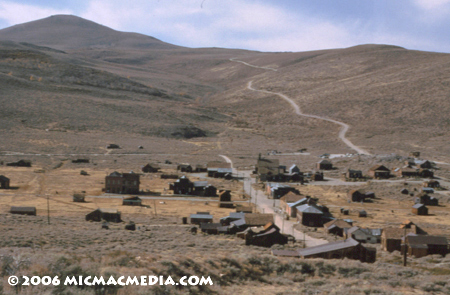
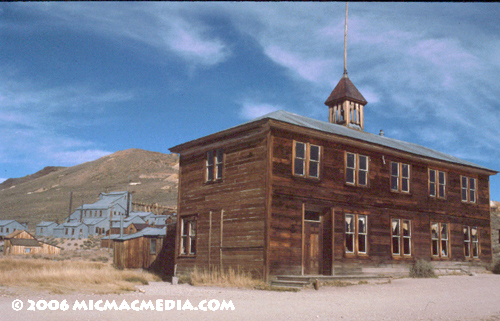
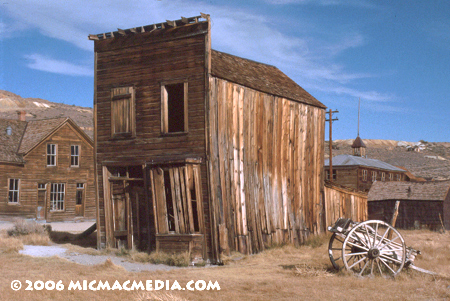
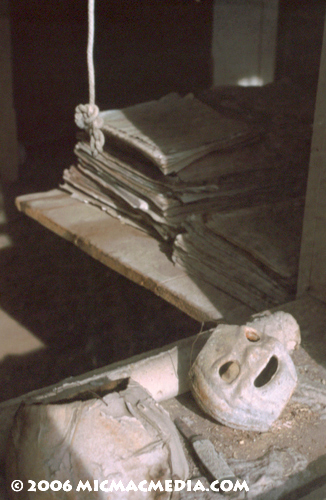
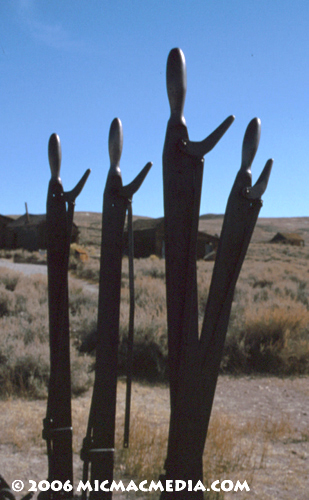
|







